Pattern activities using different shapes.
Print, cut and laminate these Pattern Activity Cards.
Students can use them to continue the pattern provided or to make their own patterns.
Updated: 10 Aug 2021
Pattern activities using different shapes.
Non-Editable: PDF
Pages: 6 Pages
Years: F - 2
Follow a short sequence of instructions; recognise, copy, continue and create repeating patterns represented in different ways
Sort, name and create familiar shapes; recognise and describe familiar shapes within objects in the environment, giving reasons
Collect, sort and compare data represented by objects and images in response to given investigative questions that have only 2 outcomes and relate to familiar situations
Make, compare and classify familiar shapes; recognise familiar shapes and objects in the environment, identifying the similarities and differences between them
Recognises, describes and continues repeating patterns
Sorts, describes, names and makes two-dimensional shapes, including triangles, circles, squares and rectangles
Contributes to collecting data and interprets data displays made from objects
Recognises, describes and represents shapes including quadrilaterals and other common polygons
Measures, records, compares and estimates internal volumes (capacities) and volumes using uniform informal units
Sort and classify familiar objects and explain the basis for these classifications. Copy, continue and create patterns with objects and drawings
Sort, describe and name familiar two-dimensional shapes and three-dimensional objects in the environment
Recognise and classify familiar two-dimensional shapes and three-dimensional objects using obvious features
Recognise, copy and continue repeating patterns represented in different ways
Sort, name and create familiar shapes; recognise and describe familiar shapes within objects in the environment, giving reasons
Collect, sort and compare data represented by objects and images in response to given investigative questions that relate to familiar situations
Make, compare and classify familiar shapes; recognise familiar shapes and objects in the environment, identifying the similarities and differences between them
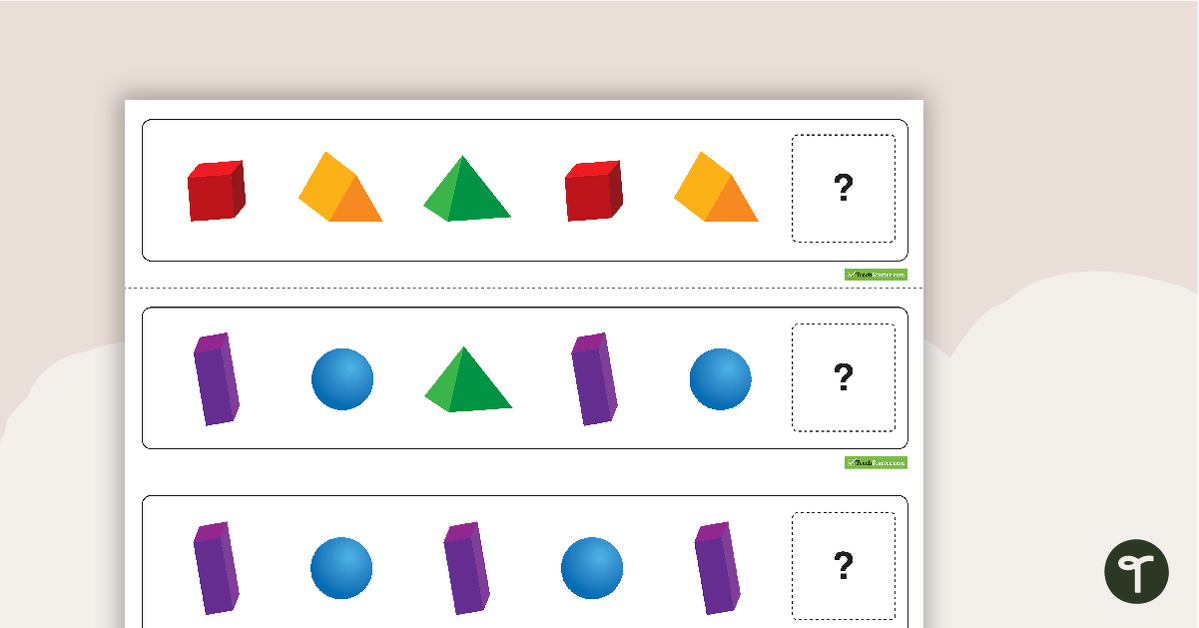
Pattern activities using different shapes.
Print, cut and laminate these Pattern Activity Cards.
Students can use them to continue the pattern provided or to make their own patterns.
Follow a short sequence of instructions; recognise, copy, continue and create repeating patterns represented in different ways
Sort, name and create familiar shapes; recognise and describe familiar shapes within objects in the environment, giving reasons
Collect, sort and compare data represented by objects and images in response to given investigative questions that have only 2 outcomes and relate to familiar situations
Make, compare and classify familiar shapes; recognise familiar shapes and objects in the environment, identifying the similarities and differences between them
Recognises, describes and continues repeating patterns
Sorts, describes, names and makes two-dimensional shapes, including triangles, circles, squares and rectangles
Contributes to collecting data and interprets data displays made from objects
Recognises, describes and represents shapes including quadrilaterals and other common polygons
Measures, records, compares and estimates internal volumes (capacities) and volumes using uniform informal units
Sort and classify familiar objects and explain the basis for these classifications. Copy, continue and create patterns with objects and drawings
Sort, describe and name familiar two-dimensional shapes and three-dimensional objects in the environment
Recognise and classify familiar two-dimensional shapes and three-dimensional objects using obvious features
Recognise, copy and continue repeating patterns represented in different ways
Sort, name and create familiar shapes; recognise and describe familiar shapes within objects in the environment, giving reasons
Collect, sort and compare data represented by objects and images in response to given investigative questions that relate to familiar situations
Make, compare and classify familiar shapes; recognise familiar shapes and objects in the environment, identifying the similarities and differences between them

We create premium quality, downloadable teaching resources for primary/elementary school teachers that make classrooms buzz!
Would you like something changed or customised on this resource? While our team makes every effort to complete change suggestions, we can't guarantee that every change will be completed.
Did you spot an error on this resource? Please let us know and we will fix it shortly.
Are you having trouble downloading or viewing this resource? Please try the following steps:
If you are still having difficulty, please visit the Teach Starter Help Desk or contact us .
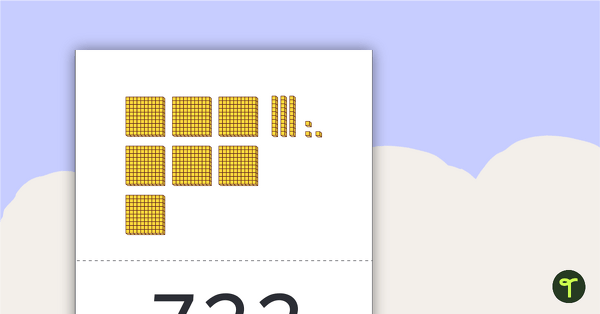
Use these base ten block matching cards to help your students practise number recognition and place value skills for numbers up to 1000.
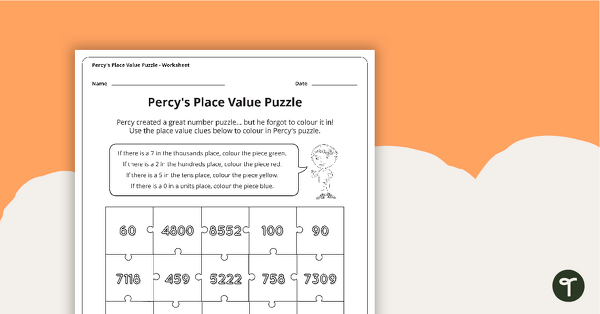
A worksheet to use to consolidate student understanding of place value to the thousands.
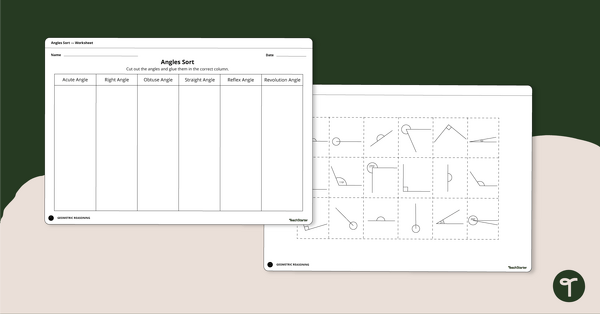
Identify acute, right, obtuse, straight, reflex and revolution angles with this cut-and-paste sorting worksheet.
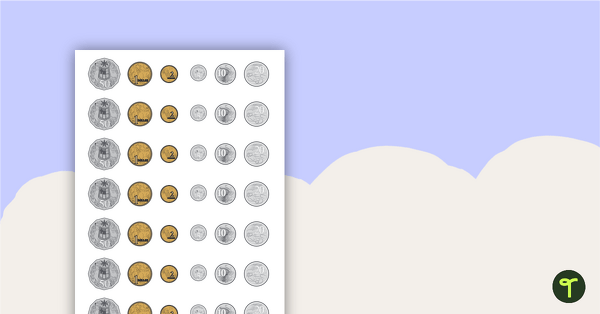
Piggy Bank Pigs are a fun, hands on way for students to learn each of the coins and how their values add up to a certain amount.

Area of 2D Shapes - so many rules and formulas to remember!
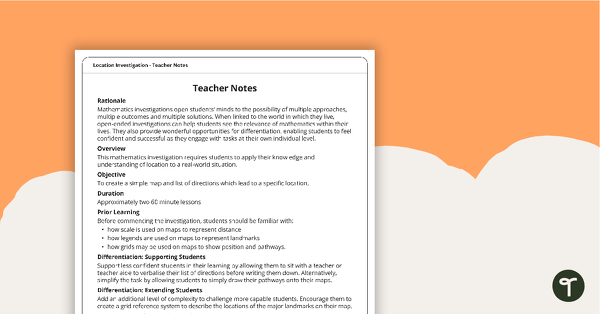
Discover a pirate-themed maths investigation that helps students master location skills by creating maps, writing directions and finding treasure.
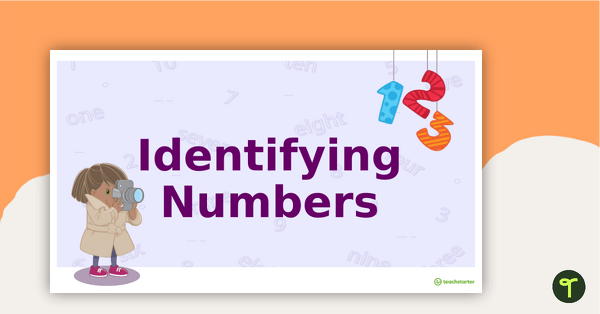
A 12 page editable presentation to use when teaching number recognition to younger students.
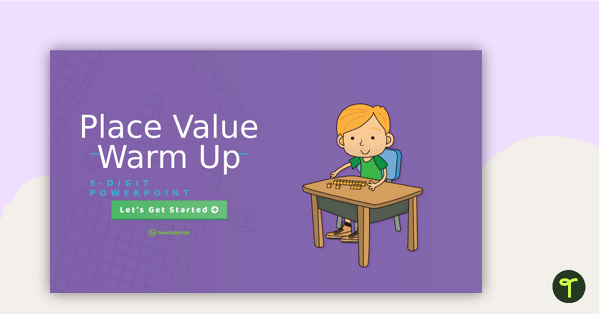
An engaging 44 slide interactive PowerPoint to use when learning about place value to 5-digits.
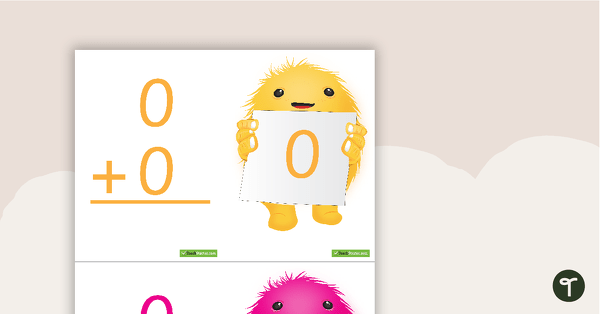
One hundred and one addition flashcards with numbers 0-10.
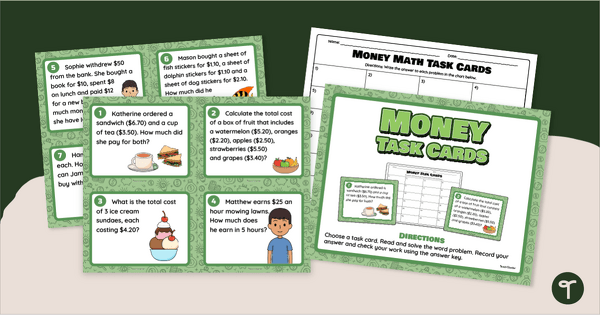
Practise solving money word problems with a printable set of multi-step word problem task cards.
0 Comments
Write a review to help other teachers and parents like yourself. If you'd like to request a change to this resource, or report an error, select the corresponding tab above.